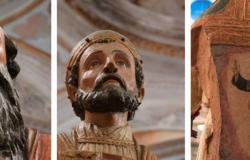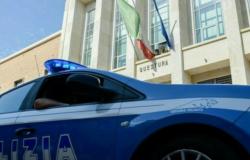How to regenerate the former Seminary of San Massimo in Verona, 17 hectares now semi-abandoned? It even contains an underground theatre-auditorium with over 700 seats, surmounted by the large Church of San Giuseppe. There is also a small compendium of rural buildings, used in the past for the cultivation of the surrounding countryside. The Church of Verona, which owns it, launched a competition of ideas, together with the San Zeno Foundation and, therefore, with Oniverse, the Veronese group that controls eight brands including Calzedonia, Intimissimi and Tezenis.
As many as 73 studies were delivered. Three won, earning a prize of 50 thousand euros to be distributed. Honorable mention for three other works. As Bishop Domenico Pompili recalled at yesterday’s ceremony, the conclusion of this collection of ideas comes exactly one month after the visit of Pope Francis to Verona, and represents another important moment for the city and the diocese of Verona, in continuity with some themes dear to the Holy Father, “promoting a vision of a Church open to dialogue, inclusion, protection of the territory and integral ecology”.
A regenerative process under the sign of transparency, which involves the entire Community, therefore called to combine the legacies and memories of the past and the challenges, and therefore the potential for future development. The Foundation and the company are a virtuous “accomplice”. In fact, the Diocese was guaranteed support by the San Zeno Foundation, a non-profit organization founded in Verona in 1999 by the will of Sandro Veronesi, president of Oniverse, through the tender open from December 2023 to March 2024. The tender does not constitute a constraint on the implementation of the proposals, but establishes some essential criteria: sustainability, environmental protection, care of the landscape, hospitality and solidarity as relational models.
The 1st prize was awarded to the “Extra seminar” proposal presented by Pool landscape with the architects Ludovico Centis, Ilaria Forti, Francesco Laserpe and Federico Vascotto. The idea is to allocate the area to educational activities and professionalizing agricultural teaching practices, involving the Veronese schools already active in this sector. The proximity to the city should also encourage the involvement of citizens with the possibility of carrying out guided tours of vegetable gardens and greenhouses and a market for the sale of products. The 2nd Prize a(“Quartiere San Massimo”) goes to Oasi architects Studio Associato with Almo Collegio Borromeo. The prospect is of a neighborhood redeveloped “from below”, in which a community intends to settle and directly contribute to the rethinking of the place. The 3rd prize launches “SEMIinARIA”; work by Bunch Studio di Architettura for a model of integration of young migrants, articulated and shared by the territory.
The intent is to escape the logic of the emergency to regularize migratory flows, favoring the virtuous meeting between beneficiaries and the host community and therefore, in perspective, facilitating the meeting between job supply and demand.





